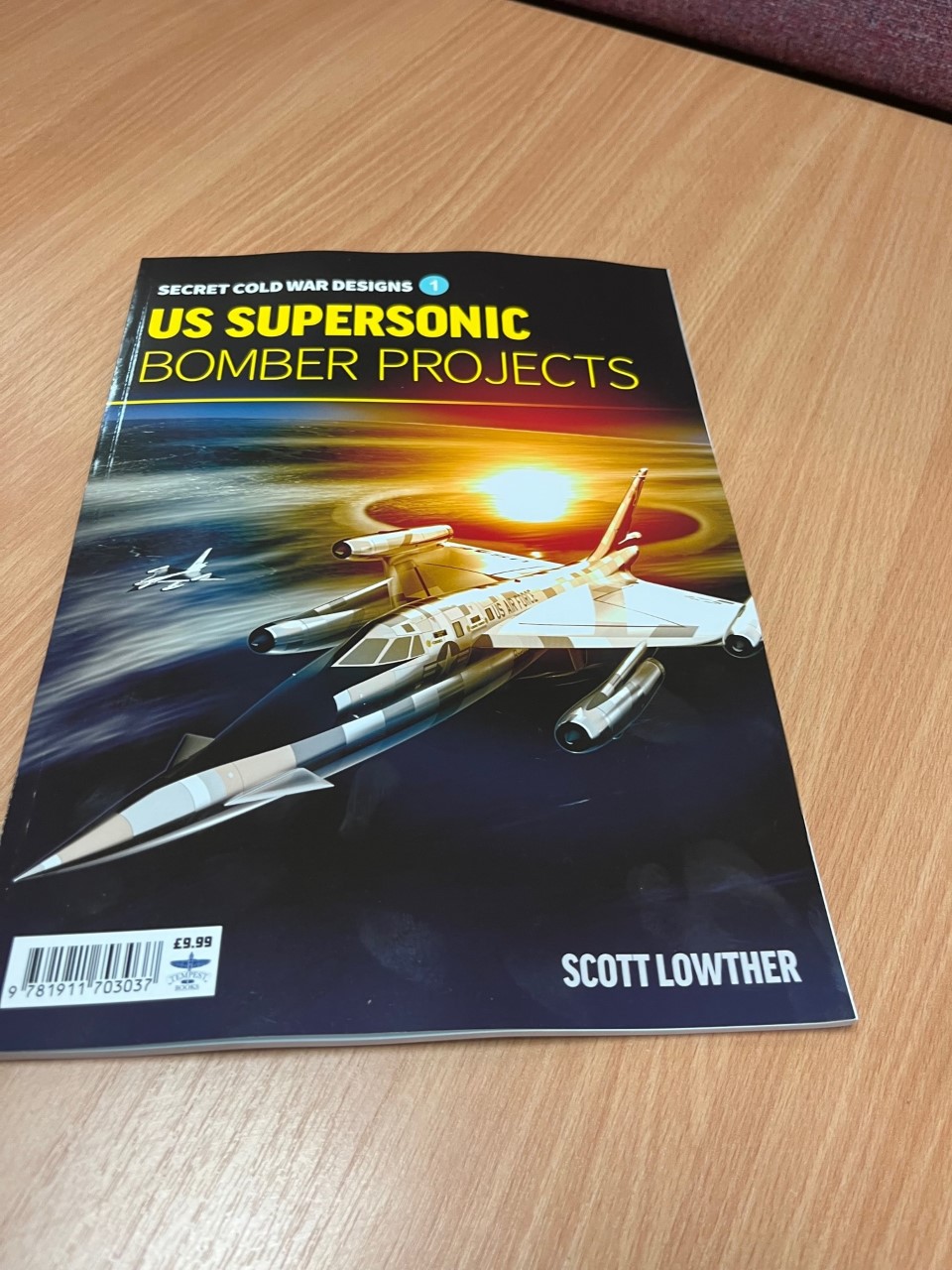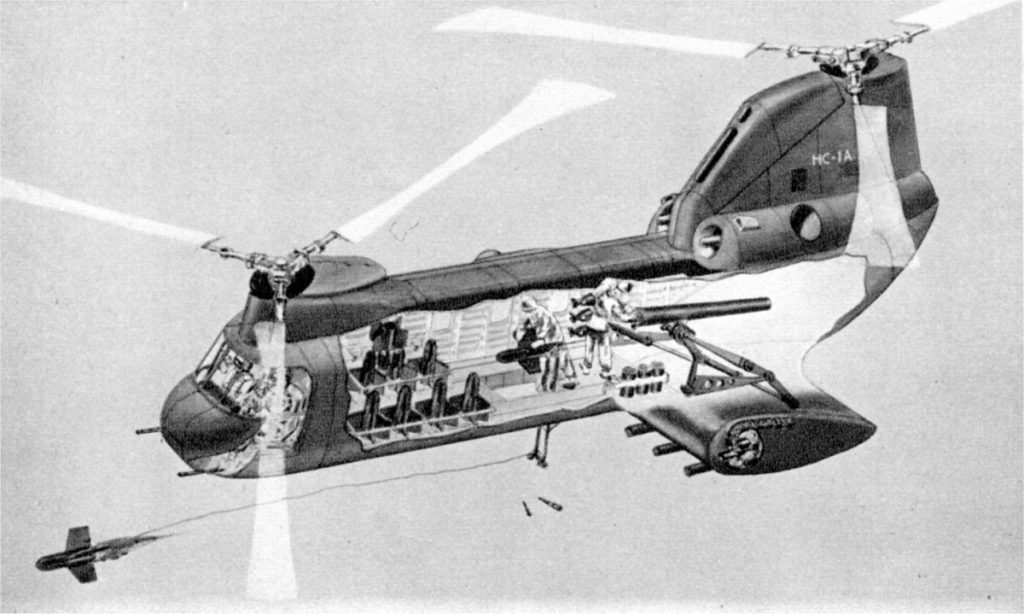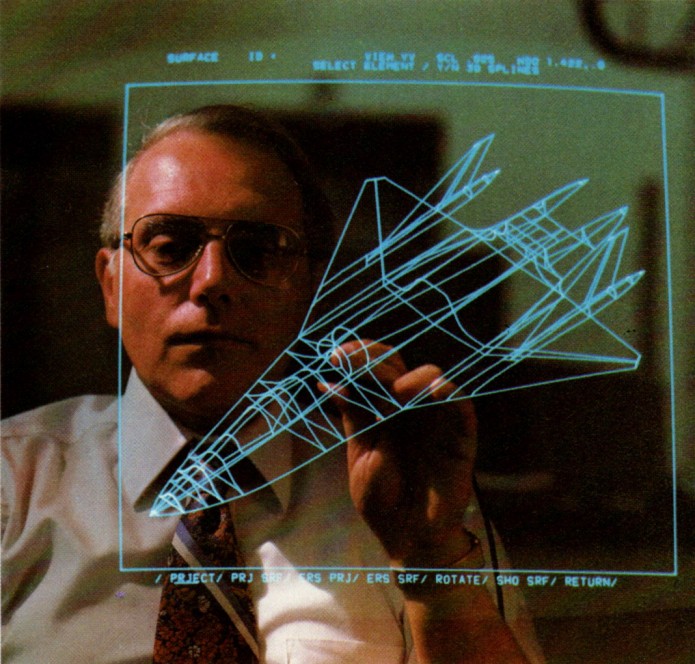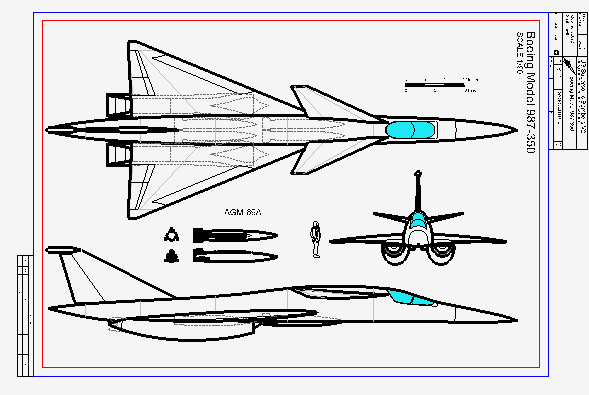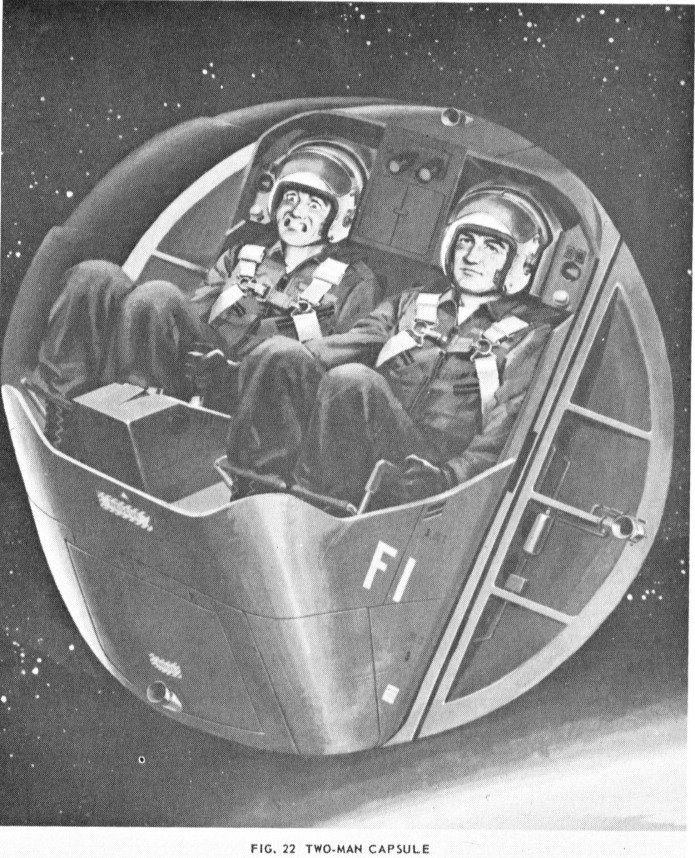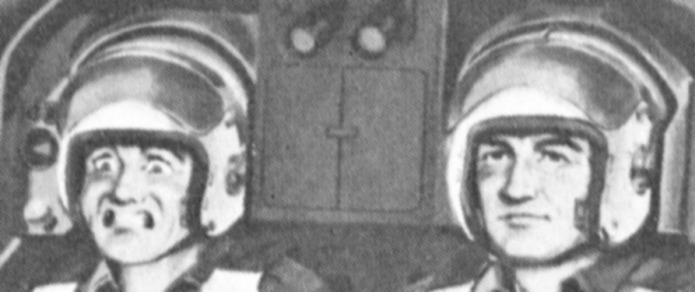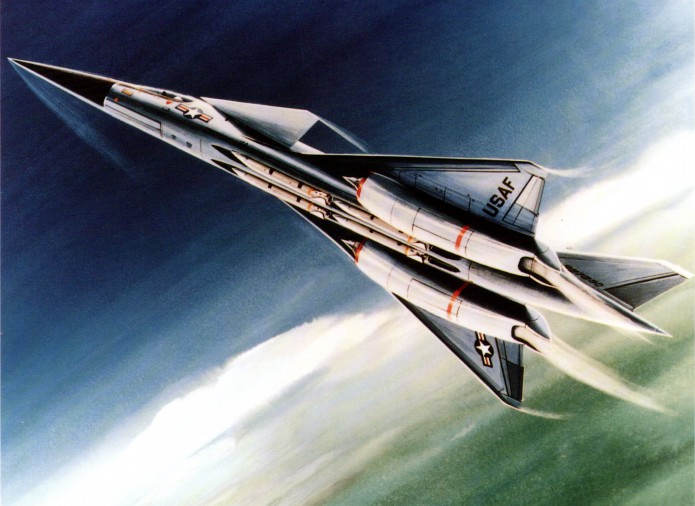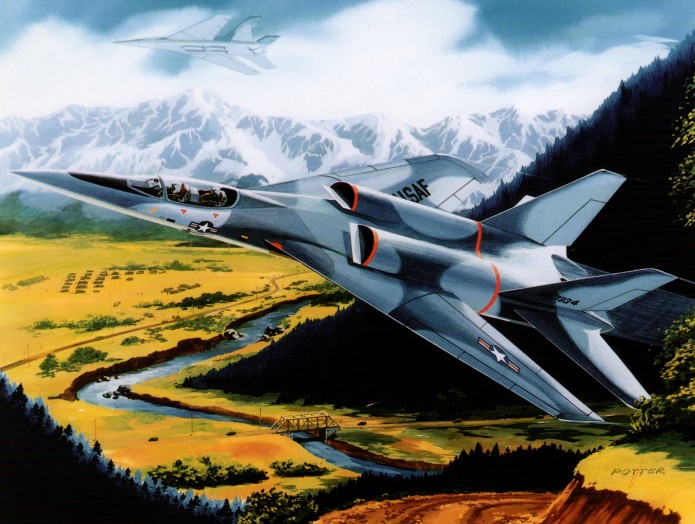Early in the LHX program (gave birth to the late lamented RAH-66 Comanche) the Army’s requirements were sufficiently aggressive and vague that Bell Aerospace held out hope that a tiltrotor might be chosen. So Bell designed a few single-seat “scout” tiltrotors under the BAT (Bell Advanced Tiltrotor) moniker. Most were more or less similar in configuration to the Bell XV-15, but one design – which I know solely from this one piece of art, published in 1983 – went a little further. The fuselage and tail surfaces were shaped to reduce the radar cross section, making the vehicle hopefully somewhat stealthier. Sadly, no diagrams or technical information for this configuration. If someone knows more, or has a better version of this artwork, by all mean let me know.
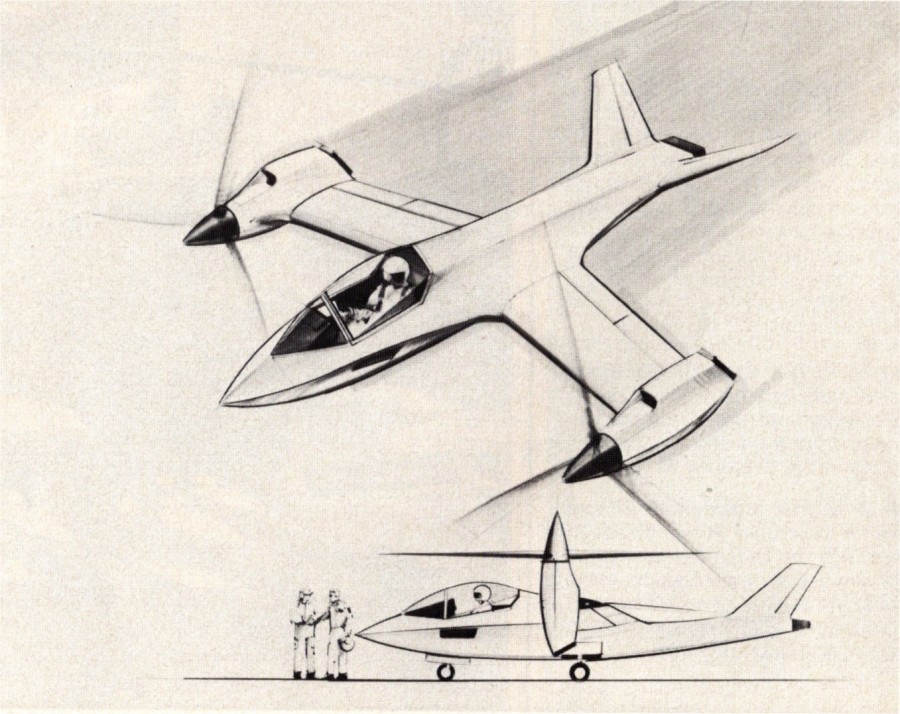
The Vertol Model 107 became the Boeing Vertol CH-46 Sea Knight. It has been a fabulously successful helicopter; development began almost *70* years ago, and some are still in service.
One suggested modification from 1961 would have seen the helicopter (designated HC-1A at the time) modified into an anti-tank variant using wire-guided anti-tank missiles. The artwork depicts the Model 107 modified with a “trapeze” that would lower from the belly holding one such missile (appears similar to the SS.11 / AGM-22) ; after launching the missile the launcher would retract back into the cargo bay where it would be reloaded and redeployed. At the rear of the bay is a manually loaded rocket launcher (though it looks more like a recoilless rifle to me) that would, after loading, swing down into a forward-firing position. Further rocket launching tubes were built into the extended rear landing gear sponsons; machine guns were fitted ahead of the cockpit.
The Grumman Advanced Stealthy Penetrator (GASP) received a fair amount of exposure in the mid 1980’s by way of artists concepts published in aviation magazines and the like. Actual technical information has remained elusive; the total pile of artwork and photos of a display model would permit the creation of reasonably good layout diagrams, but dimensions and performance remain wholly unavailable. The GASP would most likely have been intended for strike applications rather than air supremacy.
Shown below is a PR image showing, presumably, a Grumman engineer at work on a 3D CAD diagram of the GASP. This image dates from no later than 1984, so the CAD system was a pretty early one (though by no means the *earliest* CAD system). It would be interesting if the files were still in existence and could be imported into a modern CAD system… but that’s not something I’d hold out a lot of hope for. Artists impressions that show the cockpit seem to indicate that this was a sizable vehicle, though such judgements are difficult to take fully seriously.
A bit short of a week ago I posted artwork of a “Boeing Advanced Fighter.” This led to the re-discovery of the actual model number 987-350 (I knew it some time back, but my brain is full I guess). And that led to the below CAD diagram, coming in just under the wire for a forthcoming book. The 987-350 was a tactical supercruiser; armament is unfortunately left a bit vague in the available documentation. The artwork depicts it with four folding-fin AGM-69 SRAM missiles; another diagram depicts it with two larger-diameter missiles of similar length. All were to be semi-submerged for low drag.
The National Reconnaissance Office is starting a series on the history of the Manned Orbiting Laboratory, a small space lab that was designed in the early/mid 1960s for the Air Force. Officially just a basic space lab, in reality it was an advanced (for the time) spy satellite. So far there is only Part One on the NRO website, and there’s not much to it… but we’ll see how it goes.
The story of the Manned Orbiting Laboratory – part one
As a reminder, there is a whole freakin’ mountain of MOL documents on the NRO website:
Index, Declassified Manned Orbiting Laboratory (MOL) Records
A mere sixteen years ago I posted artwork of the Martin “EGRESS” ejection capsule meant to fling crew from a stricken spacecraft anywhere up to and including orbit. Those scans came from photocopies of a conference paper. I have at last now scanned the same work, producing slightly better results. The artwork is remarkable for one detail in particular: of the two crewmen, one is clearly Lance Squarejaw, wholly unfazed at his situation. The other is… not unfazed. I’d pay real money to get at the original color painting.
The whole thing – diagrams and art scanned at 600 DPI – will be offered up to APR Patrons & Subscribers soon.
Another early 80s advanced fighter concept from Boeing. This one used Viggen-like close coupled canards and vectorable 2D exhaust nozzles for aerial agility. Stealth seems to have been a minimal concern, with performance being more important. The inlets and overall aerodynamcis suggest supersonic cruise. Four sizable missiles – possible SRAM nuclear-tipped surface attack missiles – are semi-submerged in the belly for reduced drag. No further data.
Full rez scan is in the 2022-11 APR Extras Dropbox folder.
A Boeing rendering of an advanced fighter from the late 70’s/early 80’s. This design features variable sweep wings and inlets mounted over the shoulders, reminiscent of the Boeing Model 818 design proposed in the early 1960s for the TFX program (won by General Dynamics, resulting in the F-111… check out “US Supersonic Bomber Projects Vol 1” for more on that). There are four weapons mounted conformally to the underside. All in all it looks like an early attempt at a *somewhat* stealthy aircraft… not true stealth, but a substantial reduction in radar return, specifically from ground-based radar. This would seem to indicate that the aircraft was intended to generally fly low and to serve in a strike capacity.
The configuration is broadly conventional, apart from the inlets. The twin exhaust nozzles are 2D vectorable, reducing IR signature and increasing agility and short field takeoff performance. The twin tails are canted outboard, probably to knock out the “corner reflector” problem for radar returns. This was likely intended to be something of a replacement for the F-111 rather than the next air dominance fighter like the F-15.
The full rez scan has been uploaded into the 2022-11 APR Extras folder on Dropbox for $4 and up Patrons/Subscribers.
At long last I’m getting word that copies are about to be shipped to me. If you would be interested in a signed, dated and numbered copy, with a bonus 18X24 CAD diagram for $25 plus postage, send me an email and I’ll put you on the list: ![]()
Photos from the publisher:



